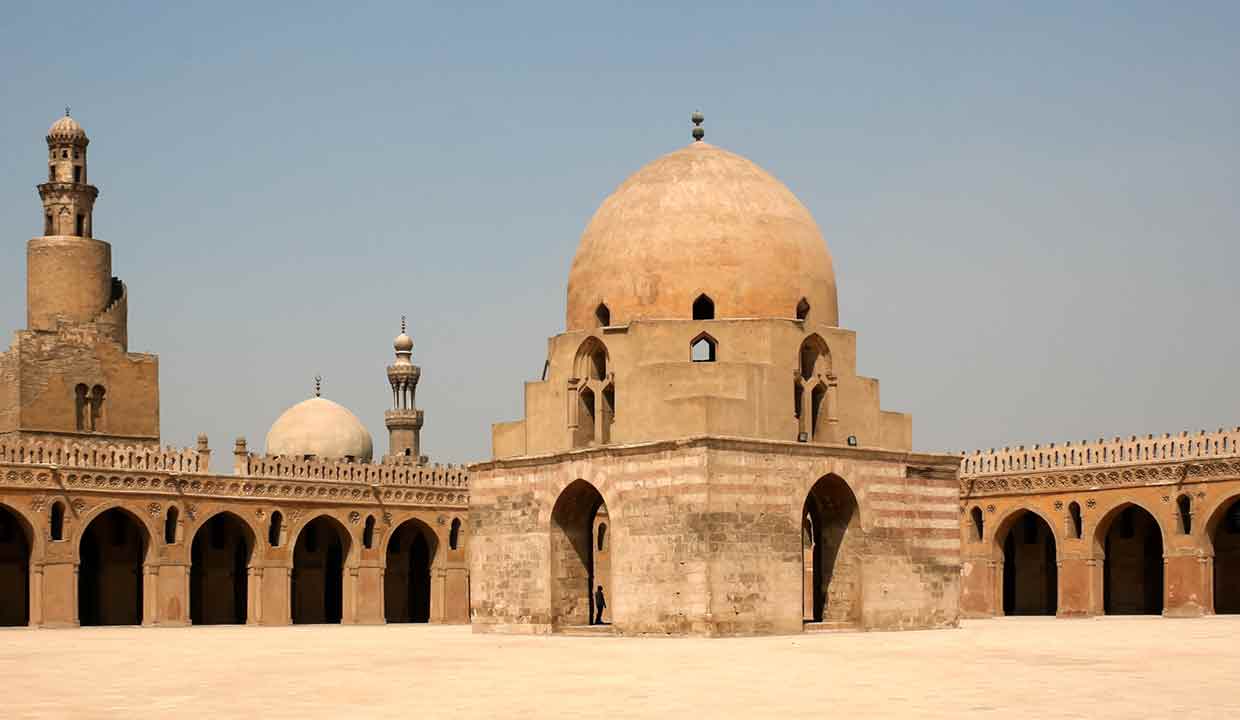From pointed arches to ziggurat-inspired minarets, the Ibn Tulun Mosque is Cairo’s testament to architectural innovation.
Nestled amidst the bustling streets of Cairo, the Ibn Tulun Mosque stands as a testament to the city’s rich history and the timeless artistry of Islamic architecture. Not only is it one of the oldest mosques in Egypt and Africa that remains in its complete original state, but it is also the grandest in Cairo in terms of sheer land area.
Historical Background
The Mosque of Ibn Tulun was commissioned by the Abbasid governor of Egypt, Ahmad ibn Tulun, in the 9th century, specifically between 876 and 879 AD. Ahmad ibn Tulun, originally a Turkic slave of the Abbasid Caliph, became the ruler of Egypt in 868 AD. He endeavored to consolidate his rule by creating architectural landmarks, the mosque being the most notable of these.
Architectural Grandeur
The architectural elements of the mosque are as captivating as its history. The entire structure is built around a vast open square courtyard known as a “sahn.” This design not only exudes a sense of serenity but also serves a practical purpose by allowing the natural light to filter through, thus illuminating the prayer halls and other sections of the mosque.
The arcades surrounding the courtyard are adorned with pointed arches, a feature that was not common in Islamic architecture at the time but would later become a signature of many Gothic cathedrals in Europe. The mosque is distinct in its absence of the conventional minaret; instead, it boasts a spiral minaret or “minar,” inspired by the ancient Mesopotamian ziggurats. This minar is one of the most unique and easily recognizable features of the mosque.
Another captivating element of the Ibn Tulun Mosque is its intricate stucco decoration, which showcases geometric and floral patterns. This was again an innovative architectural approach for its time, reflecting the fusion of various artistic influences.
The Legacy
While the mosque served as a central place of worship during the reign of Ibn Tulun, over the centuries, it underwent various transformations. At different times, it was used as a shelter for pilgrims en route to Mecca, as a fortress, and even as a workshop. However, its historical and architectural significance was never overshadowed.
In the early 20th century, extensive restoration work was undertaken to return the mosque to its original splendor, making it a focal point of Cairo’s cultural and historical heritage.
Conclusion
Today, the Ibn Tulun Mosque isn’t just an active place of worship, but also a destination for historians, architects, and tourists from around the world. It stands as a proud representation of Egypt’s rich history and the evolution of Islamic architecture. For anyone visiting Cairo, the mosque offers a journey back in time, and an opportunity to marvel at an architectural masterpiece that has withstood the test of time.
